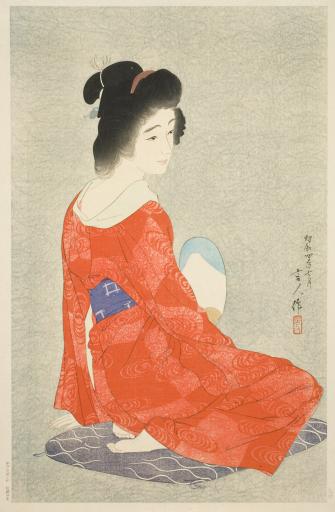The Red Kimono, Torii Kotondo
Artwork Overview
Torii Kotondo, artist
1900–1976
The Red Kimono,
1929, Showa period (1926–1989)
Where object was made: Japan
Material/technique: color woodcut
Dimensions:
Image Dimensions Height/Width (Height x Width): 409 x 260 mm
Sheet/Paper Dimensions (Height x Width): 454 x 295 mm
Image Dimensions Height/Width (Height x Width): 16 1/8 x 10 1/4 in
Sheet/Paper Dimensions (Height x Width): 17 7/8 x 11 5/8 in
Mat Dimensions (Height x Width): 25 x 20 in
Image Dimensions Height/Width (Height x Width): 409 x 260 mm
Sheet/Paper Dimensions (Height x Width): 454 x 295 mm
Image Dimensions Height/Width (Height x Width): 16 1/8 x 10 1/4 in
Sheet/Paper Dimensions (Height x Width): 17 7/8 x 11 5/8 in
Mat Dimensions (Height x Width): 25 x 20 in
Credit line: Museum purchase: Lucy Shaw Schultz Fund
Accession number: 1997.0358
Not on display
If you wish to reproduce this image, please submit an image request


